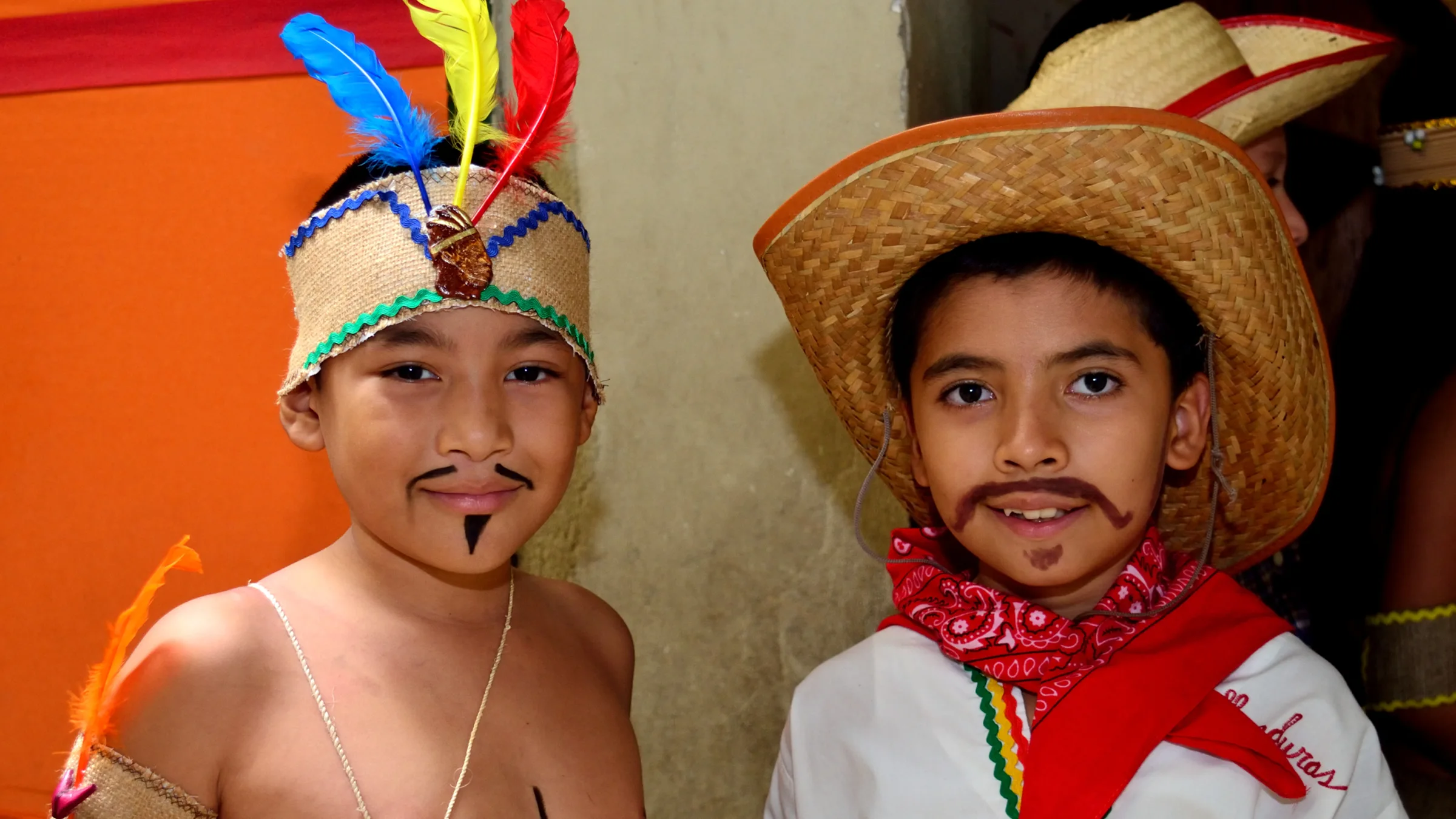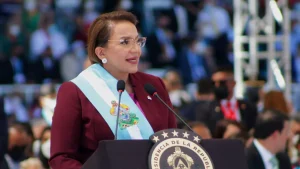Biography of cacique Lempira

Lempira (born 1499 – death 1537) was a war captain of the Lenca people who fought against the Spanish during the 1530s, in documents written during the Spanish conquest, he is mentioned by the name of El Lempira.
He was an indigenous of Lenca origin, of medium height, with a broad back and thick limbs. He was brave and from a very young age he showed great courage, he felt an intimate love for his people, his land, their laws and their customs.
Lenca meaning of the name Lempira
Traditionally called Lempira, its name was “Erandique”, according to the “Probanza de Méritos” written by Rodrigo Ruiz.
The name Lempira, according to Jorge Lardé and Larín, comes from the word Lempaera, which in turn comes from two words in the Lenca language: from lempa, which means «lord» —a title of high dignity or hierarchy—, and from era, which means “hill or mountain range”. Thus, Lempira, would come to mean «Lord of the mountains» or «Lord of the hill.»
Rising of Cerquín
It is believed that it was born around the 1490s and was forged in the mountains of Cerquín, where the Lenca indigenous people, in their attempt to resist the brutality of the conquerors, took refuge in the high and rocky mountains, taking their women and children with them. and provisions. The Spaniards called these sites that served as trenches for the natives, «peñoles», Lempira was in charge of the peñol de Cerquín .
In 1537 by order of the cacique Entepica, the «Rising of Cerquín» took place based on the Cerquín hill, in charge of Lempira, by order of the cacique Entepica who sought to stop the Spanish penetration.
When the Spanish arrived in Cerquín, Lempira was fighting against neighboring caciques, but due to this threat, Lempira allied with the Lenca subgroup of Los Cares and managed to gather an army of almost 30,000 soldiers, from 200 towns.
As a result, other groups also took up arms in the Comayagua valley, in Olancho. Spanish attempts to defeat them, led by Francisco de Montejo and his lieutenant, Alonso de Cáceres, were unsuccessful before 1537.
These actions, which sought to stop Spanish penetration, were stifled by the invaders, and with the death of Lempira -who was between 38 and 40 years old- and the consequent dispersal of the indigenous people, the Spanish territorial dominance in the western and central region was consolidated. from Honduras.
Death of Lempira
With the death of Lempira, Spanish territorial dominion over the central and western region of Honduras was consolidated and new settlements were founded, among them, Gracias, in 1539.
History in the General Archive of the Indies
There is another version of Lempira’s death, found in the Probanza de Méritos, a document drawn up in Mexico in 1558 by Rodrigo Ruiz, and discovered by Mario Felipe Martínez Castillo in the General Archive of the Indies in Seville.
This document deals with the service of Rodrigo Ruiz in the conquest of Honduras with Francisco de Montejo, and affirms that the captain «El Lempira», died in combat with Ruiz in the middle of a «guazavara» (riot or unexpected battle) and later, Ruiz he cut off his head as irrefutable proof of Lempira’s death. The text includes Alonso de Maldonado and Catalina de Montejo as witnesses.
Traditional History of the Death of Lempira
In the traditional version, which is based on the work of the chronicler Antonio de Herrera y Tordesillas, General history of the events of the Castilians on the islands and on the mainland of the Ocean Sea .
Herrera claims that Lempira died treacherously. The Spanish convinced him to agree to meet with two representatives of Alonso de Cáceres to negotiate peace. During the meeting, an arquebusier shot Lempira repeatedly from a horse, ending the life of the hero Lenca.
However, the Honduran historian Mario Felipe Martínez has questioned this version of the death of Lempira by Antonio de Herrera. Martínez discovered in the Archivo de Indias a piece of evidence that the soldier Rodrigo Ruiz presented to the Spanish authorities in Mexico in 1558.
This documentary piece was located by Martínez Castillo, and would have been written in Mexico in 1558. It is cataloged in Patronato Regio Legajo No. 69, Branch No. 5 in the Archivo de Indias, in Seville and consists of 90 folios (pages). In it, Don Rodrigo narrates the events that led his patrol to face the hosts of Elempira and how he killed him:
Rodrigo Ruiz’s story
“If you know that when I saw the saying Rodrigo Ruiz what was done and all Spaniards were in great danger because it was public that all the natives of the province came to give us war and that it could not be less than when we left the Real saying for ourselves. to return to the seat of Ciguatepeque as ordered, they had to kill us and take some Spanish alive for being as we were, many of the wounded and ill who could not fight,I said Rodrigo Ruiz as jealous of the service of his Majesty, putting my person in great danger to avoid as much evil as expected I tried to enter the said squad of enemies with my sword and surround it and I went to the part and place where I was encouraging his people the said captain called Elempira who brought the clothes and weapons of the Spaniards who had died and fighting with him killed him and cut his head which for bringing it to the general said he received many wounds in the head as well as in the face with all which I took it out in my hands and never let it down, even though I was fighting and wounded from dangerous wounds from which I reached a point of death and the head I gave the general in his hands, say what you know and see for the oath that you have made and if this happened ansi really… »(the spelling of the original document is respected).»
In summary, Rodrigo narrates the feat of having faced alone the Indian Lempira provided with his sword and surrounds it. Later, he wore his head as a trophy. In addition, he received many injuries on the way from the Indians, injuries that almost caused his death.
For his part, Bishop Cristóbal de Pedraza – who stood out in the defense of the natives – on May 18, 1539 reported from Thanks to the Kings of Spain that it was necessary to defeat Lempira with «a certain industry». That is, not in frontal combat, as Ruiz says.
It is not that there are two versions of Lempira’s death. It is that a historical myth has been clarified and the truth has come to light, just as it happened and not as it was told to us.
The document is of utmost importance because it confirms the real existence of Lempira, the name of the cacique (referred to as Elempira), the description of the war and the scene of the war.
Acknowledgments
- The lempira (ISO 4217 code: HNL), the national currency of Honduras was named after the indigenous leader.
- Lempira Day, the Honduran people commemorate the Lenca hero on July 20 of each year.
- Lempira, department of Honduras named in his honor, with departmental head in the city of Gracias.
- Puerto Lempira, municipality and departmental head of the department Gracias a Dios.
- Several schools in Honduras are named after the hero Lempira.
July 20 – National Lempira Day
On July 20 the national day of Lempira is celebrated. Dramatic representations of Lempira’s death are staged in schools, and the “pretty india” is chosen in a beauty contest in which the girls dress as indigenous.
In 1600 a community was founded with the name of Cerquín, located to the west of the hill of the same name. Its name changed to Erandique over the years and today it is a municipality and constituent city of the department of Lempira.
References
- HERRERA Y TORDESILLAS, Antonio. General History of the events of the Castilians in the Islands and the mainland of the Ocean Sea (Madrid, 1601), 4 volumes.
- Patronato Regio File No. 69, Branch No. 5 in the Archivo de Indias, in Seville, 90 folios (pages), 1558. Bucentauro
- Lempira: things you did not know about the hero of the indigenous resistance
What’s more…
- July 20 – Cacique Lempira Day
- Hymn to Lempira
- History of the Currency of Honduras
- Heroes of Honduras



